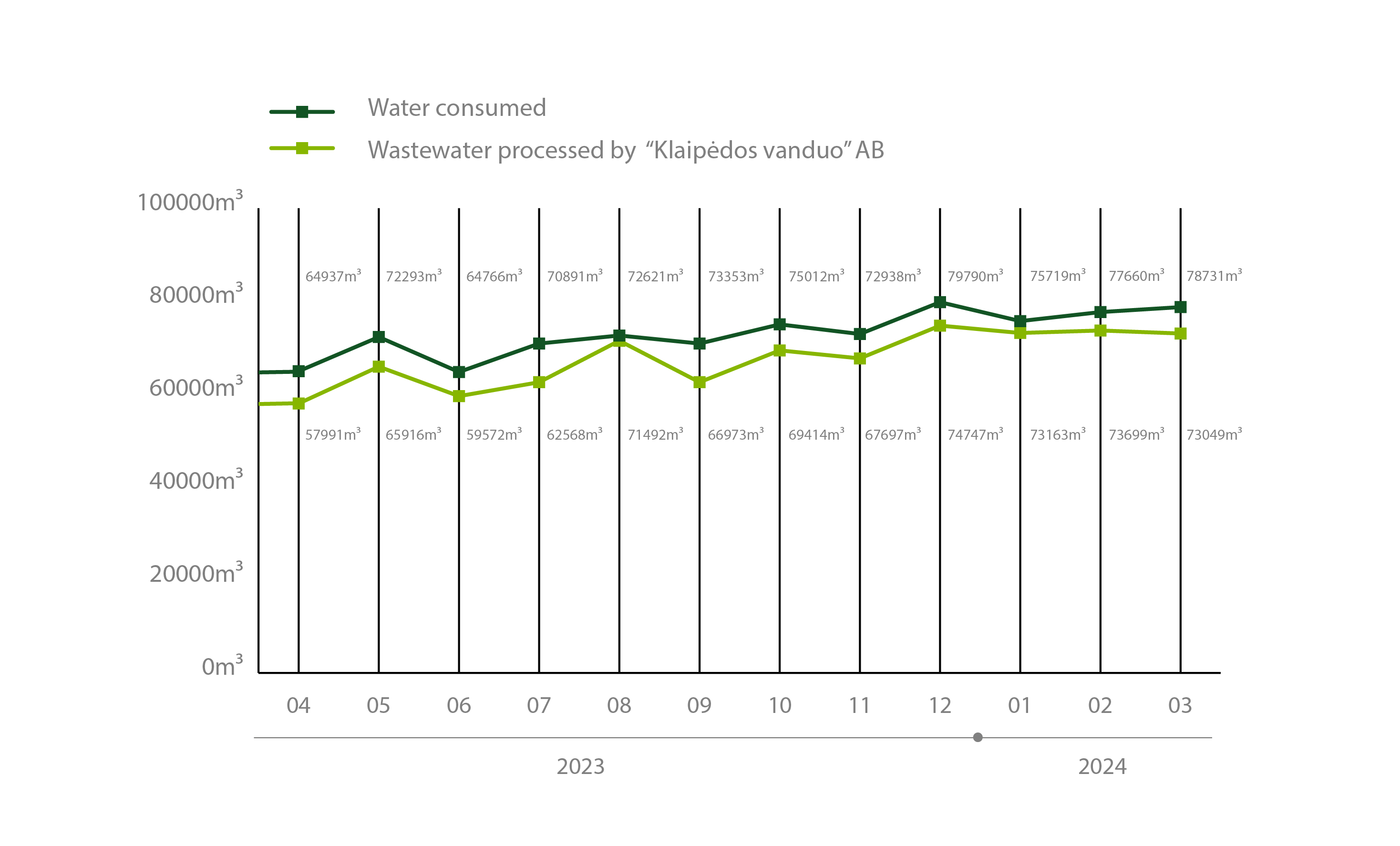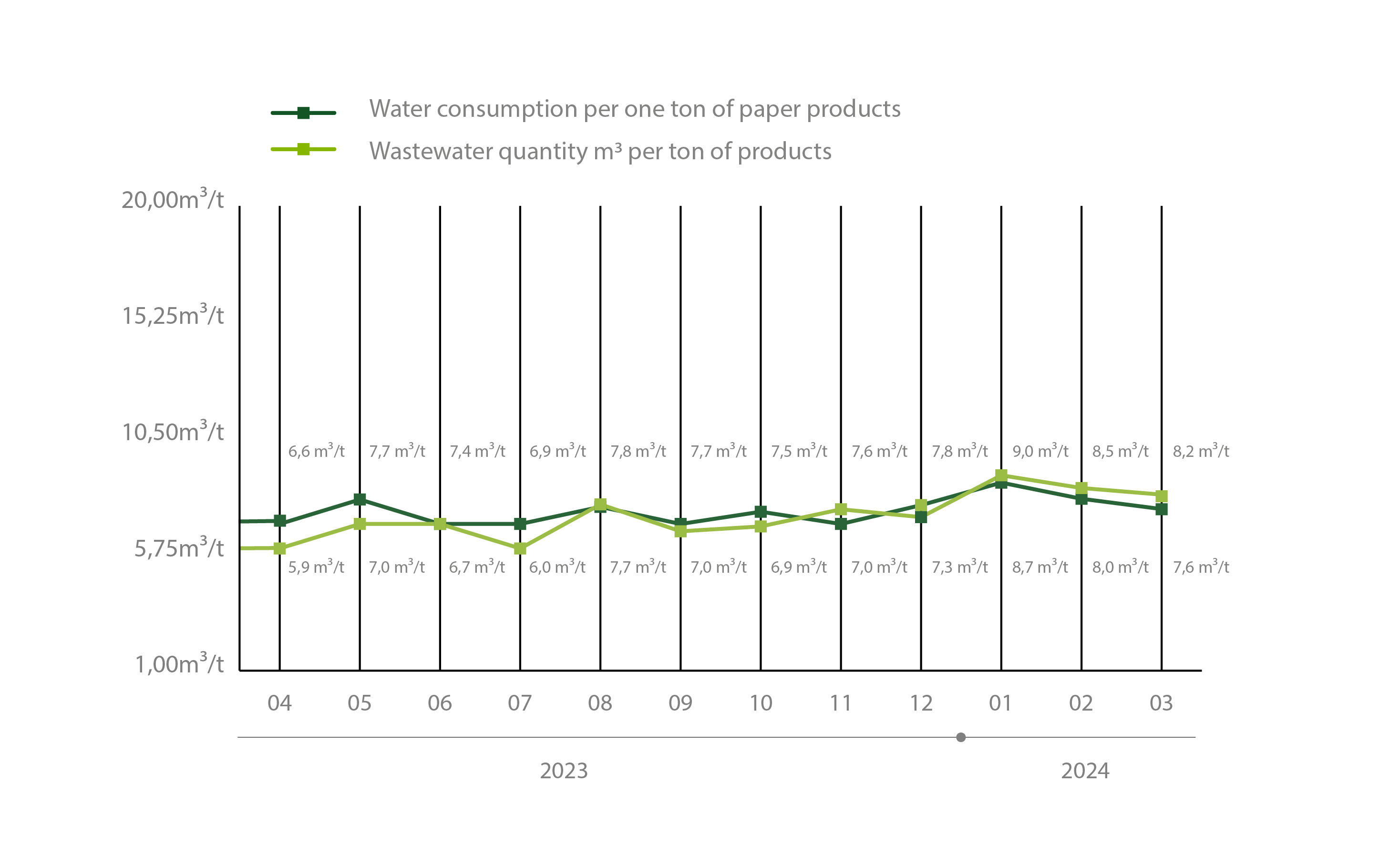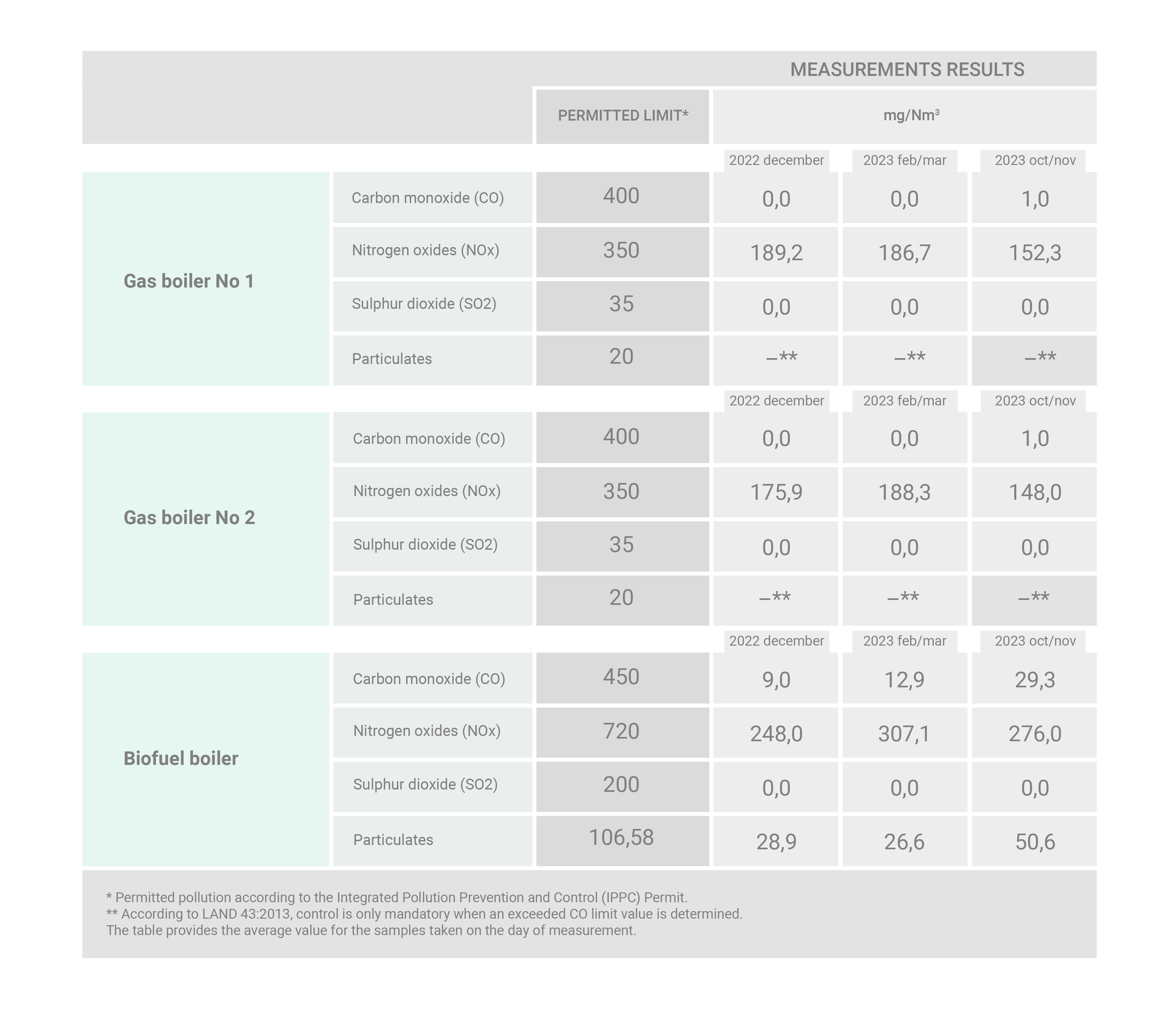Grigeo Klaipėda AB is the largest manufacturer of paper packaging raw materials in the Baltics. The company manufactures raw materials for corrugated cardboard, namely the testliners (flat layers of corrugated cardboard) and the fluting (paper for corrugated boards and raw materials for honeycomb fillers). The company also manufactures honeycomb cardboard fillers used in the production of furniture and doors as well as the auto industry. All products are manufactured from recycled materials only, i.e. waste paper.

1. Waste paper warehouse
2. Water pumping station
3. Deinking facility
4. Pulp storage tank
5. Biofuel warehouse
6. Boiler plant
7. PM3 paper machine
8. Production storage unit
9. Wastewater tank
10. Wastewater monitoring and quality control check-point
11. Klaipėdos vanduo AB wastewater treatment facility
- Waste paper collection.
- Pulp preparation
Pulp preparation requires two key components, paper fibre (from waste paper) and water. Waste paper is washed in water. This gives us a mixture of paper fibre and water (or pulp), which is then cleaned. The fibre is then purified and enhanced. - Shaping
Once ready, the paper pulp is forwarded to the paper machine, which shapes it into a band of a desired quality. - Crimping
The fully shaped paper band contains about 93% water, yet the final product must have only about 6%. To achieve this, the paper machine crimps the paper band, pressing it between two rotating shafts, while the water extracted from the paper band is redirected to the manufacturing process. - Drying
The remaining water is removed from the paper band by thermally processing it, i.e. drying. The drying process uses steam produced in the boiler plant to heat the machine’s cylinders which then transfer the heat to the paper band. The temperature of the steam-heated cylinder surface reaches 100⁰C, which ensures the evaporation of water once the paper band comes into contact with it. - Rolling
Rolling is the last stage of the process, where the paper dried to the desired level is rolled into massive rolls. Cutting machines then cut them into sizes required by our clients. - Distribution of products

Water is a natural resource and its conservation as well as efficiency of use and reduction of waste always remain our goal. That is why we re-use the water needed for manufacturing paper several times, with the help of designated water purification equipment. Not using this equipment would mean a ten-fold increase in our water consumption.
Our water consumption is monitored via an automated monitoring system. Each part of the manufacturing process that uses water is monitored, with current total water use being measured in real time. This allows us to operate our production facilities and use water in the most effective way possible.
The chart below shows monthly consumption of water per unit of production.

As of 7 January 2020, all manufacturing wastewater by Grigeo Klaipėda AB is treated in the wastewater treatment facility of Klaipėdos vanduo AB.
Like with our use of water, we monitor the amount of wastewater using our automated monitoring system. A certified lab tests and identifies wastewater pollution levels (COD, BOD7, Total Nitrogen, Total Phosphorus, Suspended sediments).
We all want to breathe clean air. The company’s task and responsibility is to ensure that production activities generate as low emissions to the ambient air as possible.
The company’s boiler house produces steam to be used in the paper drying process. About 70% of energy is generated in a biofuel boiler and about 30% in a gas boiler house. The biofuel we use in the production process is considered a renewable energy source and greenhouse effect-neutral.
The boilers used in steam production:
- gas steam boiler No 1 VITOMAX 200 HS (thermal input – 14.5 MW);
- gas steam boiler No 2 VITOMAX 200 HS (thermal input – 13.2 MW);
- gas steam boiler No 3 VITOMAX 200 HS (thermal input – 17.5 MW and a 4 MW condensing economiser);
Monitoring of boiler emissions
Measurements of all air pollutants emitted from the boilers – carbon monoxide (CO), nitrogen oxides (NOx), sulphur dioxide (SO2) – are performed in accordance with the approved Environmental Monitoring Programme twice a year (in the warm and cold seasons). Measurements in the company are performed by an external firm.
The results of measurements of air emissions from the boiler house of AB Grigeo Klaipėda are presented in the table below.



